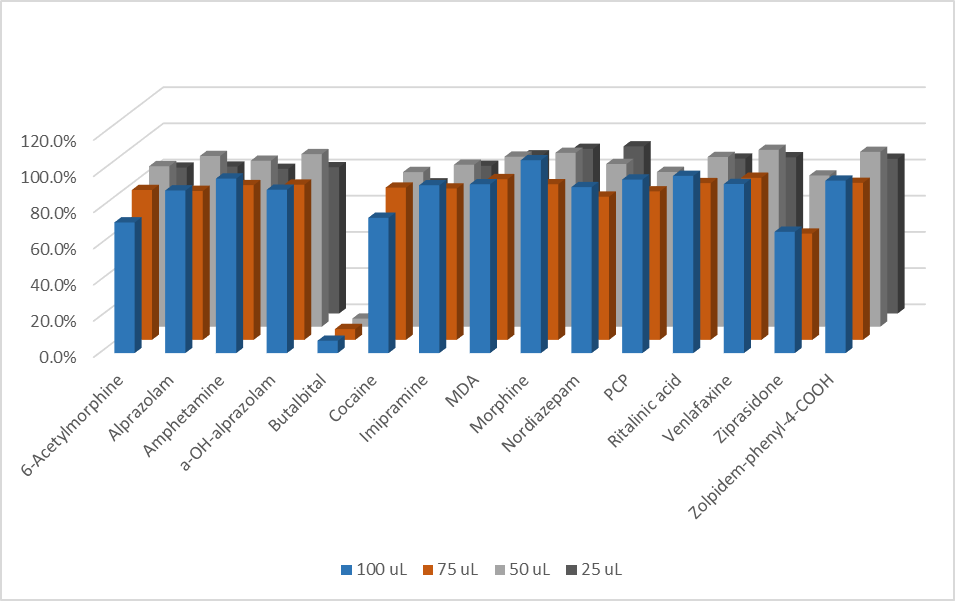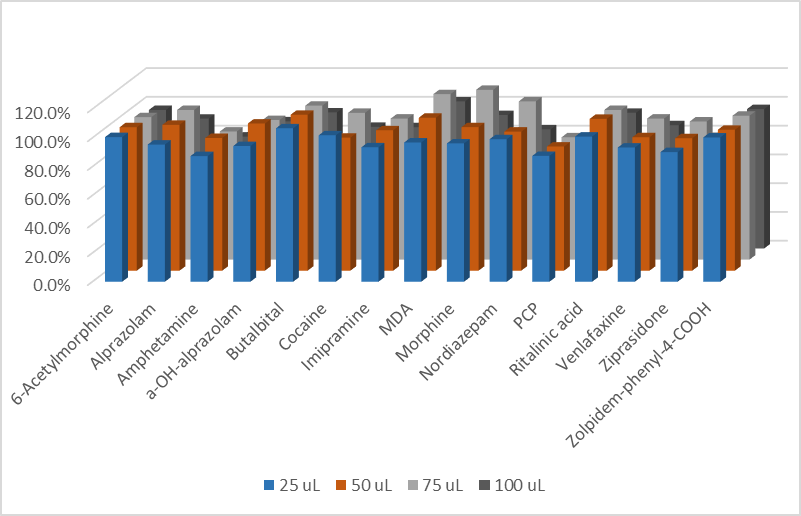In this blog post, we will discuss how to determine the optimal sample volume for a sorbent bed mass. We have developed an adequate solid phase extraction method for our laboratory. However, we're starting to notice some oddities when we extract and analyze our samples. Could we be losing compounds from our sample?
When I'm developing a new method, I usually use a sorbent bed mass bigger than what I might need. This is to ensure that I am getting recovery of all of the compounds that I have in my panel. For example, for my 98-compound drug panel in urine, I started with the EVOLUTE EXPRESS CX 30 mg sorbent bed. Once I had my extraction protocol optimized for washes and elution solvents, I began to determine how much sample I could load onto my sorbent bed. In this case, I wanted to use the EVOLUTE EXPRESS CX 10 mg sorbent bed. When I was developing the 30 mg sorbent bed method, I used a 100 uL sample for my 98-compound panel. I thought that might be too much sample for my 10 mg sorbent bed. I then tested 4 sample volumes for the 10 mg sorbent bed: 25 uL, 50 uL, 75 uL, and 100 uL of sample.
In order to determine which of the tested sample sizes worked the best with the 10 mg sorbent bed, I looked at both recoveries and matrix effects of all compounds in the 98 compound panel.
Need a refresher on how to calculate recoveries and matrix effects?

When looking at the recoveries in the above chart, there was a decrease in recovery amount for most compounds when using a 100 uL sample size. This indicates overload of sample onto the sorbent bed, which means that not all of the analytes in the sample could bind to the sorbent bed. A 50 uL sample size had the highest recoveries.
Matrix effects (shown below) were fairly standard across all sample sizes. When using a 100 uL sample size, more suppression was seen versus using other sample sizes.

The experiments to determine optimal sample size for a sorbent bed don't take long once a method is fully developed for the type of sorbent and wash/elution solvents. Using a smaller sample volume and sorbent bed mass can lead to a cost savings from both, solvents used and the extraction media itself.
Do you want to know more about sample preparation? We have prepared for you plenty of interesting resources on extraction techniques and method optimization. A good starting point can be the Quickstart Guide to SPE. This guide provides a summary of the more important points to consider during method development. Click on the button below and have a look at it.
Download the Quickstart Guide to SPE

 Organic Workflow
Organic Workflow Peptide Workflow
Peptide Workflow Scale-Up Flash Purification
Scale-Up Flash Purification  Sample Preparation
Sample Preparation Biomolecule Purification
Biomolecule Purification Oligo synthesis
Oligo synthesis Scavengers and Reagents
Scavengers and Reagents Service & Support
Service & Support Accessories & Spare parts
Accessories & Spare parts Investors
Investors Reports & News
Reports & News The Share
The Share Corporate Governance
Corporate Governance Calendar
Calendar Sustainability
Sustainability Our Offering
Our Offering Our History
Our History Our Locations
Our Locations Leadership
Leadership